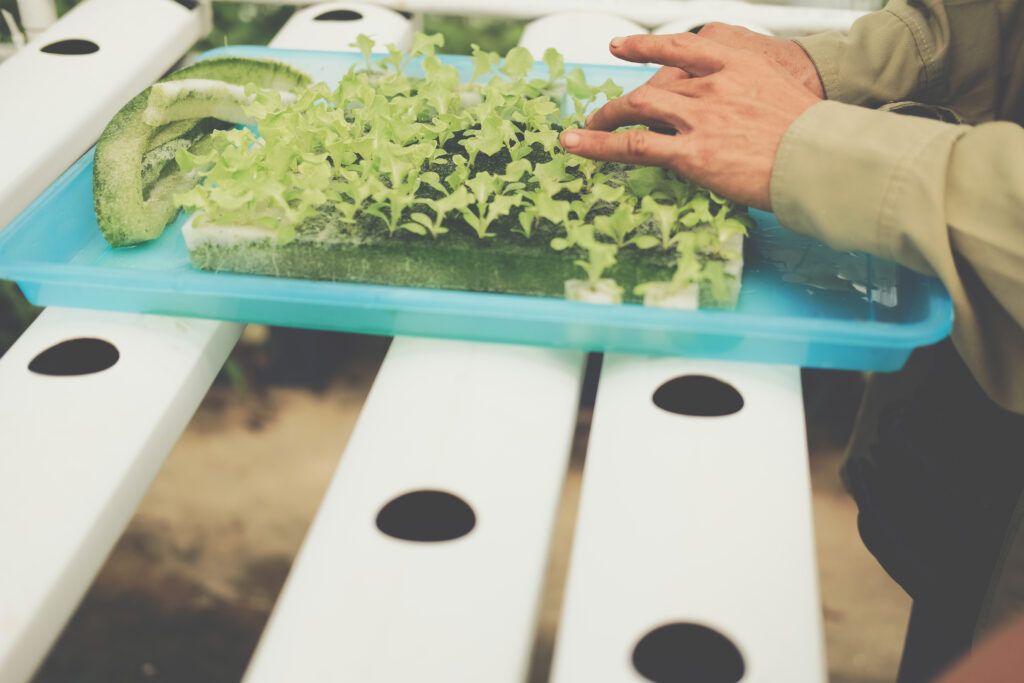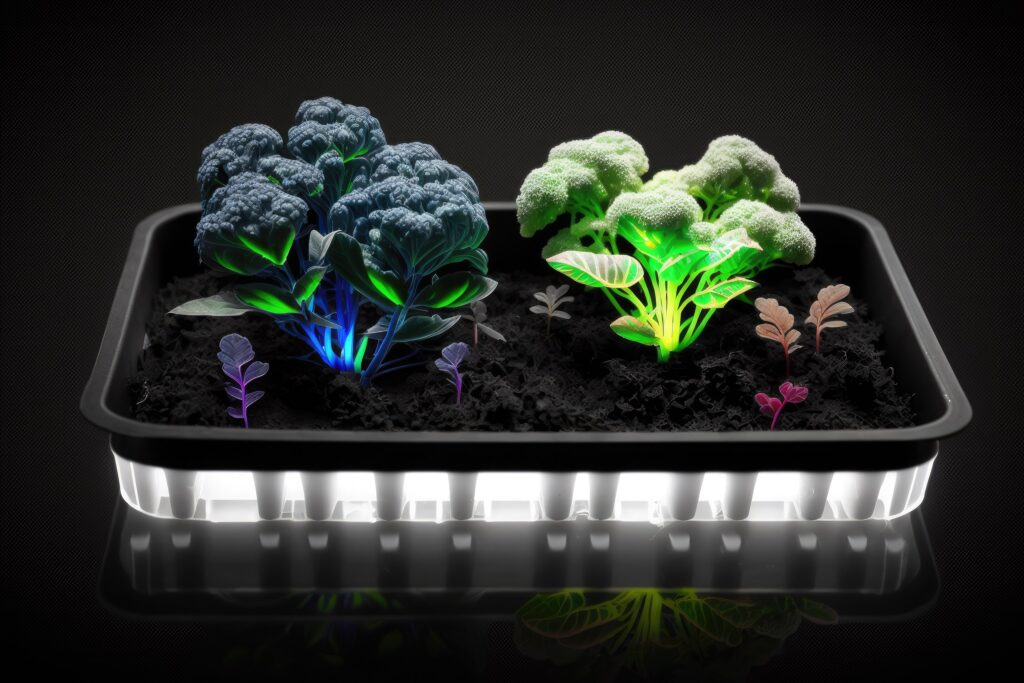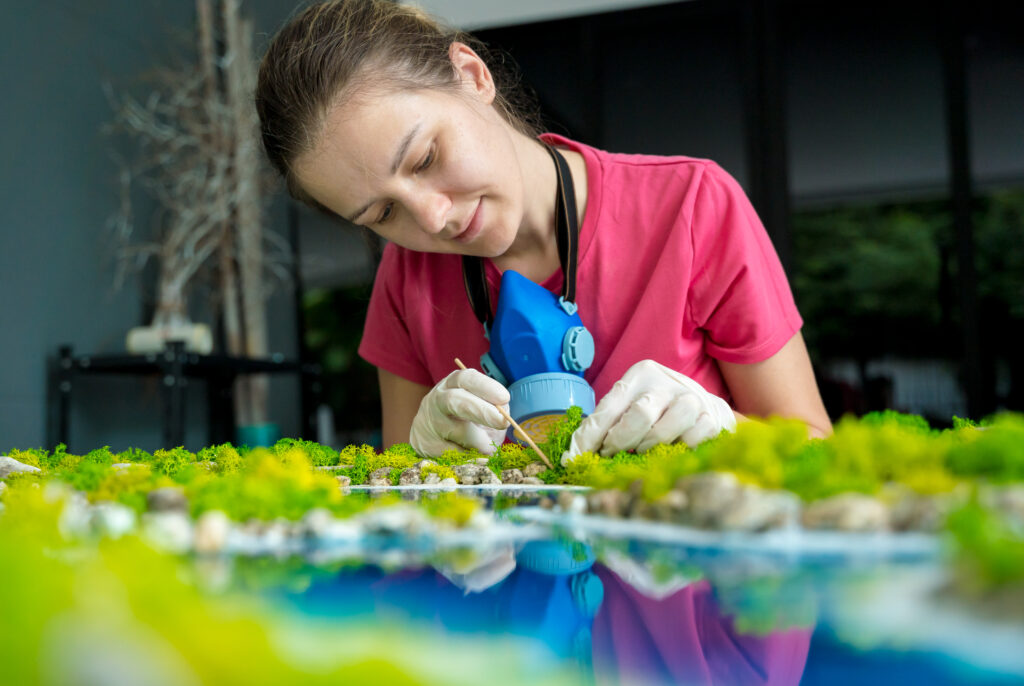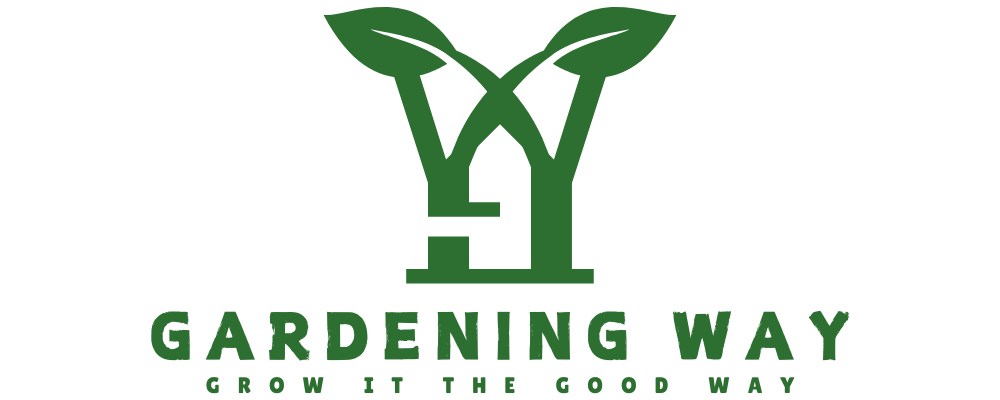Imagine a garden that thrives without soil, its roots soaking up nutrients from water instead. This is the world of hydroponic nutrition, changing how we feed plants. It’s a new way of farming that leaves soil behind.
Hydroponic gardens are like mini-ecosystems, where plants get exactly what they need from the water. They require 17 key nutrients to grow well, from nitrogen and phosphorus to iron and zinc. This article will cover these nutrients and how they help plants in water-based systems.
Keeping the right pH balance is crucial for healthy plants. Even small changes can affect how well plants absorb nutrients. We’ll talk about common problems and how to avoid them. A balanced diet is key for your plants to thrive without soil.
Understanding Hydroponic Systems and Plant Nutrition
Hydroponics is a new way to grow plants without soil. It’s great for places where space is limited but crops need to grow well. This method needs the right balance of essential hydroponic nutrients to help plants grow strong.
Hydroponic plants need a special mix of nutrients since they don’t get them from soil. Nutrients like nitrogen, phosphorus, and potassium are key for growth. Iron and manganese help with plant health.
Getting the nutrient mix right is crucial. For example, Hydro-Gardens Chem-Gard’s Tomato formula has the right balance for tomatoes. It includes magnesium and other important elements for healthy plants. Another mix, Sonneveld’s solution, is perfect for herbs and has the right amount of nitrogen for growth.

Choosing the right fertilizers and how to use them is important in hydroponics. Calcium nitrate needs to be mixed right because it changes with temperature. Using a propeller can help mix nutrients well, making sure plants get what they need.
Hydroponics aims to give plants the nutrients they need naturally. This means knowing a lot about nutrients and what plants need. By adding nutrients for hydroponics in the right forms, plants can grow healthy and produce well. Keeping an eye on the nutrients and making changes as needed is key to successful hydroponic farming.
Navigating Macronutrients and Micronutrients
When growing plants with hydroponics, it’s key to know the balance of macronutrients and micronutrients. These nutrients are vital for plant health and growth. Macronutrients like nitrogen, phosphorus, and potassium are needed in large amounts. They help build strong plants, turn energy into growth, and protect against diseases.
Micronutrients, like iron and zinc, are also crucial but in smaller amounts. They help with making chlorophyll, activating enzymes, and helping plants reproduce. The right mix of these nutrients in a hydroponic plant nutrient mix is important for a healthy and productive garden.

Choosing the best hydroponic nutrient solution is crucial. Each plant type needs different nutrients for the best growth. The solution should have all essential nutrients in a form that plants can easily take in. This prevents problems like nutrients settling at the bottom of the solution.
Hydroponic systems must balance nutrients carefully. Too much nitrogen can stop plants from getting other important nutrients like potassium and phosphorus. This shows how complex managing a hydroponic nutrient solution can be.
To avoid nutrient imbalances, it’s important to check the pH and EC levels often. This helps plants absorb nutrients well, leading to healthy and efficient growth. Remember, the right nutrient solution is key to a successful hydroponic system.
Hydroponic Plant Nutrients: The Foundation of Growth
The success of a hydroponic system relies on the right balance and precise delivery of nutrients. Hydroponic nutrition is key to plant health and growth. Plants get carbon, hydrogen, and oxygen from air and water. But, the right mix of nutrients is what makes them grow strong from roots to flowers.
Macronutrients like Nitrogen (N), Phosphorus (P), and Potassium (K) are crucial. They help with energy, growth, and flower development. Calcium (Ca), Magnesium (Mg), and Sulfur (S) support cell health and photosynthesis too.
Even though they’re needed in small amounts, micronutrients are vital. Iron (Fe), Manganese (Mn), Zinc (Zn), Boron (B), and Molybdenum (Mo) help plants make food, grow strong, and fight off stress. Adding these to hydroponic setups boosts growth and strengthens the plant’s immune system.
Commercial growers often use granular hydroponic nutrients for their efficiency and high nutrient levels. But, there’s growing interest in water-soluble fertilizers. These come in two parts, Part A and Part B, to avoid nutrient problems.
Organic hydroponics, like aquaponics, are becoming popular. They use fish waste as nutrients, creating a sustainable system. This approach is efficient and good for the environment, following organic farming principles.

Keeping the nutrient solution’s pH right is crucial. It affects how well nutrients dissolve and get to the plants. A pH between 5.5 and 6.5 is best for nutrient uptake and plant health.
Choosing the right hydroponic fertilizer and closely watching plant health is key to a good harvest. By using science and technology, hydroponics can lead to sustainable and productive farming.
The Role of pH in Nutrient Uptake for Hydroponics
The pH level in a hydroponic system greatly affects how well essential hydroponic nutrients work. It’s key to manage pH well to feed hydroponic plants right. If the pH is off by a bit, plants can’t get the nutrients they need, even if they’re there.
The pH scale goes from 0 (very acidic) to 14 (very alkaline), with 7 being neutral. Most hydroponic plants do best in a slightly acidic setting. This helps them take in nutrients like Nitrogen, Phosphorus, and Potassium better. For example, plants like tomatoes and strawberries grow and produce more fruit in this pH range.
Changing the pH needs to be done carefully. To lower pH, you might use phosphoric acid. To raise it, potassium hydroxide works well. It’s important to check the pH often with tools like pH meters or litmus paper. This keeps the hydroponic system healthy and helps feed hydroponic plants well.
Wrong pH levels can cause nutrient problems or toxicities. For instance, some nutrients can be toxic at low pH levels. Others, like iron, become scarce at high pH. This shows how crucial the balance of essential hydroponic nutrients is, controlled by pH. Managing pH well can fix these issues and keep a hydroponic garden healthy all year.
Interplay of Nutrients and Hydroponic Fertilizer Solutions
The art and science of hydroponic nutrition focus on the balance of nutrients in hydroponic nutrient solutions. Getting the mix right can greatly improve plant health and yield. But, too much of one nutrient can block the uptake of others.
Rice, tomatoes, and potatoes grow better in hydroponics than in fields, thanks to special nutrient solutions. These solutions prevent the problems of too much or too little fertilizer. For example, too much potassium can stop plants from getting enough nitrogen. So, it’s important to watch and adjust the nutrient levels to help plants grow strong.
Correct nutrient mix provides the necessary macro and micronutrients in balanced ratios, ensuring that these essential elements work collaboratively rather than competitively.
Hydroponic systems need regular checks on nutrient levels. Using advanced tools like sensors and AI helps keep nutrients in balance. This ensures plants stay healthy and productive. These technologies help control nutrient levels, preventing problems like toxicity or shortages.
In conclusion, getting nutrients right in hydroponics is more than just mixing the right stuff. It’s about always checking and tweaking the nutrient solutions. This way, plants can grow well without nutrient problems.
Diagnosing and Addressing Nutrient Deficiencies in Hydroponic Plants
In the world of hydroponics, getting the balance right with nutrients for hydroponics is key. If you notice nutrient deficiencies, it’s a sign your system needs work. Fixing these issues is crucial for healthy plants and good yields.
Visual Inspection and Testing
Checking your plants regularly is vital for feeding hydroponic plants well. Look out for signs like chlorosis or necrosis to spot nutrient shortages. For example, older leaves might turn yellow if there’s not enough nitrogen, while young leaves may show yellow spots if they lack iron.
For a clear diagnosis, test your media and nutrient solution often. Tools like the Apera Instruments pH Tester, praised by over 23,000 reviews, help keep the pH right. This ensures your plants absorb nutrients well, keeping it between 5.5 to 6.5.
After finding a deficiency, tweak your nutrient mix right away. You might add more of a certain nutrient or adjust the pH with products like General Hydroponics pH Up and pH Down. These have helped thousands of growers, as noted in over 8,200 reviews. Giving your plants the right amounts of nitrogen, phosphorus, potassium, calcium, and magnesium can help them bounce back.
If problems don’t go away, try foliar sprays or root drenches. These deliver nutrients straight to where they’re needed. Using smart tech, like nutrient monitoring systems with sensors, can also give you real-time feedback. This helps you make precise changes to keep your plants healthy.
Seasonal plant care is also key in managing a hydroponic system. Knowing how the seasons affect nutrient uptake lets you adjust your feeding schedule and nutrient mix. This helps avoid shortages and makes the most of your setup.
Spotting and fixing nutrient shortages is vital for hydroponic gardening success. Keep an eye on your plants, make precise changes, and understand their needs. Using visual checks, pH monitoring, and smart nutrient management boosts your plants’ resilience and yield.
Maintaining Balanced Hydroponic Nutrition Through Growth Stages
Gardeners in hydroponic farming face changing nutritional needs as plants grow. Each stage, from seedlings to mature plants, needs its own special fertilizer plan. For example, in a 100-gallon setup, the early stages need an EC of 0.6 to 0.8. The right amount of nourishment is 2.5 ml per gallon for three nutrients, adding up to 250 ml total.
Young plants need less of the essential nutrients because their roots can’t take much in. But as they grow, they need more. In the blooming stage, they love potassium and nitrogen. Phosphorus is key when they’re getting ready to produce fruit. Growee’s systems can mix nutrients in just a minute, making sure plants get what they need without a lot of work.
Getting the right amount of nutrients is crucial for plants. The Growth Stage Identification algorithm is very accurate, especially in the early and late stages. It’s important to balance nutrients like nitrogen, phosphorus, and potassium. Keeping the water’s pH right between 6 and 7 helps plants grow strong. This approach is key to meeting the world’s growing food needs, making hydroponics a crucial part of the solution.





